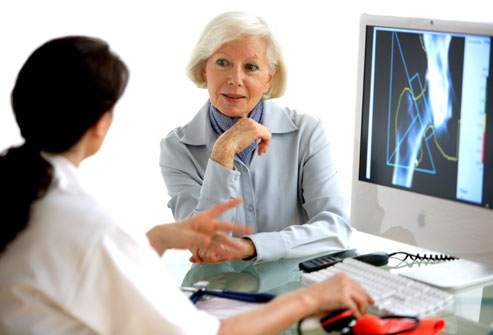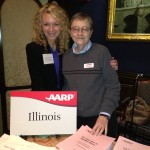AARP Hearing Center
NEWS FLASH: Risk of Breaking Bones After 50 Is Bigger Than We Thought
By Barbara Hannah Grufferman, April 25, 2013 06:00 AM

There's a silent and stealthy disease you may not even know you have ...until you fall.
A new study, " The 2010 Burden of Osteoporosis and Low Bone Mass among Residents of the U.S. Age 50 and Older," released by the National Osteoporosis Foundation during its annual Interdisciplinary Symposium on Osteoporosis reveals that the prevalence of low bone density and the risk of breaking a bone are far greater among people over 50 than previously realized.
The risk of breaking bones - a major health and quality of life issue as we age - is on the rise. Approximately 9 million adults in the U.S. have osteoporosis, but more than 48 million have low bone mass (indicated by T-scores between -1.0 and -2.5), placing them at increased risk for osteoporosis and broken bones.
This is the first look at the 'burden of osteoporosis' using NOF's criteria for diagnosing osteoporosis based on bone mineral density (BMD) at the hip or spine. Before 2005, the National Health and Nutrition Examination Survey (NHANES) only measured BMD at the hip.
Here are some startling statistics: If osteoporosis and low bone mass prevalence continue on this path, the study projects that by 2020, 10.7 million adults will have osteoporosis and 58.2 million will have low bone mass. By 2030, the numbers are expected to increase to 11.9 million adults with osteoporosis and 64.3 million with low bone mass. This is information we all need to pay attention to . . . especially if we're over 50.
Related: Quiz: Test your knowledge on how to protect your bones
The good news is it's never too late (or too early) to make simple lifestyle changes that can keep our bones healthy for life.

I was in Chicago last week to moderate a panel of bone health experts who discussed the latest information about diagnosing, treating and managing one of the most prevalent - and preventable --diseases affecting men and women over 50.
The "Healthy Bones, Build Them for Life" panel, presented by the NOF, kicked off the week-long symposium and was designed to educate attendees about how to prevent bone loss by reviewing the most current research on diet, exercise and other steps we need to take to keep bones healthy for the long-term. The AARP Illinois team was out in full force at the event, handing out terrific booklets focusing on eating the right foods for strong bones. Here's a photo of Assoc. State Director for AARP Illinois, Terri Worman, and me after the event:

At the end of the evening, I asked the panelists to share their most important "take away" from the discussion:
Dr. Murray Favus: Early detection. Establish a baseline and early detection through a bone density test. Don't wait until you fall and break a bone to discover you have low bone density or osteoporosis. Be proactive. Dr. Mona Khanna: Early prevention. Since we start to lose bone mass by the time we're in our 30s, do everything you can to prevent osteoporosis by eating well and exercising as soon as possible. By the time we are nearing 50, our risk will be less. Dr. Karen Kemmis: Early education. Be an educated consumer by understanding what you can do to keep bones strong as we get older. Eating calcium-rich foods and keeping your vitamin D levels where they should be are key. Exercise is essential: push-ups, weights, planks, walking, running and other weight-bearing exercises --done regularly and started early --will help keep osteoporosis at bay.
The ongoing challenge for those involved in the prevention and treatment of osteoporosis and low bone density is to make people realize that we need to start preventative measures much earlier in life - not just when we turn 50 - to be truly effective at keeping our bones strong so we can live independent lives for as long as possible.
Stay tuned for the new weekly series I'm hosting for AARP which will focus on all the simple ways we can improve our health and better our lives. Episodes showing how to do specific exercises and what to eat for strong bones will run weekly during May in support of National Osteoporosis Month. They will be available for viewing on the AARP YouTube Channel and the NOF website. I hope you enjoy the trailer!
Until next time, remember this: We can't control getting older, but we can control how we do it!
I'm the National Osteoporosis Foundation 'Ambassador for Bone Health' and a fierce champion of positive aging. For more tips on living your best life after 50 (or 60, or 70...) check out "The Best of Everything After 50: The Experts' Guide to Style, Sex, Health, Money and More" and www.bestofeverythingafter50.com. Keep me posted on how you're doing by subscribing to me on Facebook and "tweeting" me on Twitter at @BGrufferman.
Photo credits: Barbara Hannah Grufferman's personal photos, webmd.com
Also of Interest
- Poll: Aging U.S. in Denial About Long-Term Care Need
- Games for 50+ Strengthen Friendships
- Join AARP: Savings, resources and news for your well-being
See the AARP home page for deals, savings tips, trivia and more































































